Introduction
There have been increased efforts by the Federal and State governments to reduce use of illicit drugs.
The efforts have stemmed out of the negative health, social and economic effects of illicit drug use (Harwood, Fountain & Livermore, 1998).
For instance, in 1999 the number of young people aged between 12 and 17 who depended on illicit drugs was 3.6 million (Substance Abuse and Mental Health Services Administration, 2000).
The use of drugs increases the rate of psychiatric disorders and crime in the society.
As a result, the federal and state governments have formulated policies and laws to curtail illicit drug use.

Federal versus States’ Anti-Drug Policies
The federal government has over the last century made efforts to control illicit drug use through different ways.
Federal policies include: deterrent through imprisonment, treatment through rehabilitation, and prevention through awareness creation.
Deterrent is the most common and widespread approach at the national level.
This measure contributes to the predominance of drug users in prison facilities with minorities having a greater representation (Beck & Mumola, 1999).
The federal law applies to all states but states also formulate their own laws.
For instance, the federal government enacted the Marijuana Tax Act in 1937 but by then all states and the District of Columbia had their own policies governing non-medical marijuana use.
The U.S. Congress passed the Controlled Substances Act (CSA) (21 U.S.C. 811 et seq.) in 1970.
The Act provides the federal government with guidelines for controlling the production and distribution of illicit drugs.
The Act classifies these drugs into five groups: Schedule I to Schedule V.
Classification is done according to the drugs’ likelihood for abuse, reliance, and medicinal value.
The schedules are listed in declining order of harm: schedule I drugs represent the most harmful illicit drugs with little or no medicinal value while schedule V drugs represent the least harmful drugs with more medicinal value (Belenko, 2000).
Despite the federal law guidelines, states have their own guidelines on the drug schedules.
States can therefore decide to add or eliminate certain drugs from the general schedules.
States also have freedom in the manner in which they handle each illicit drug in courts.
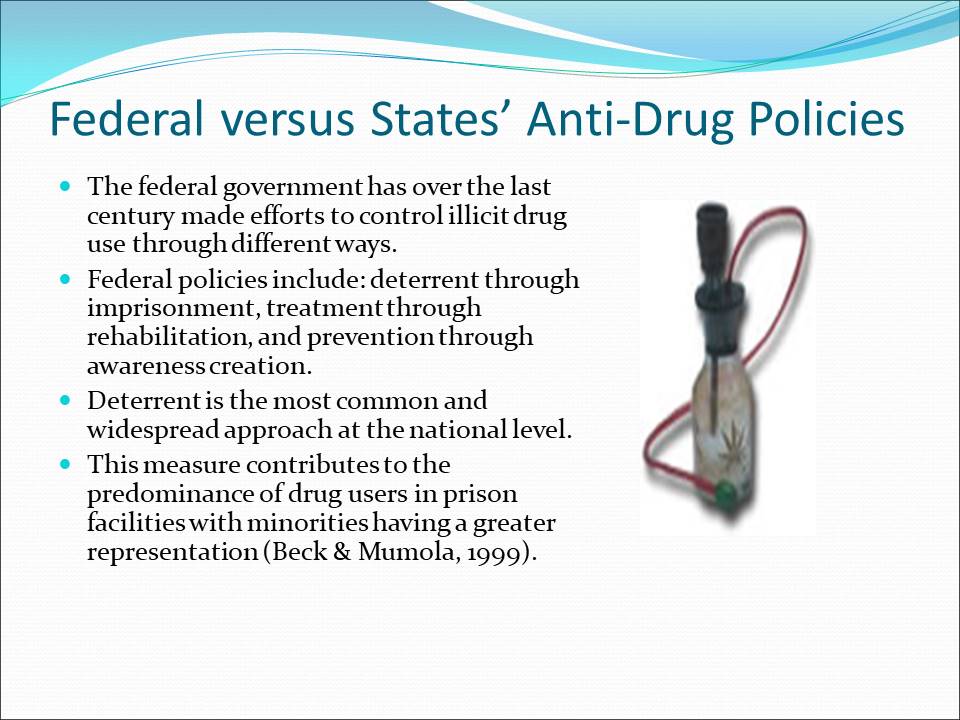
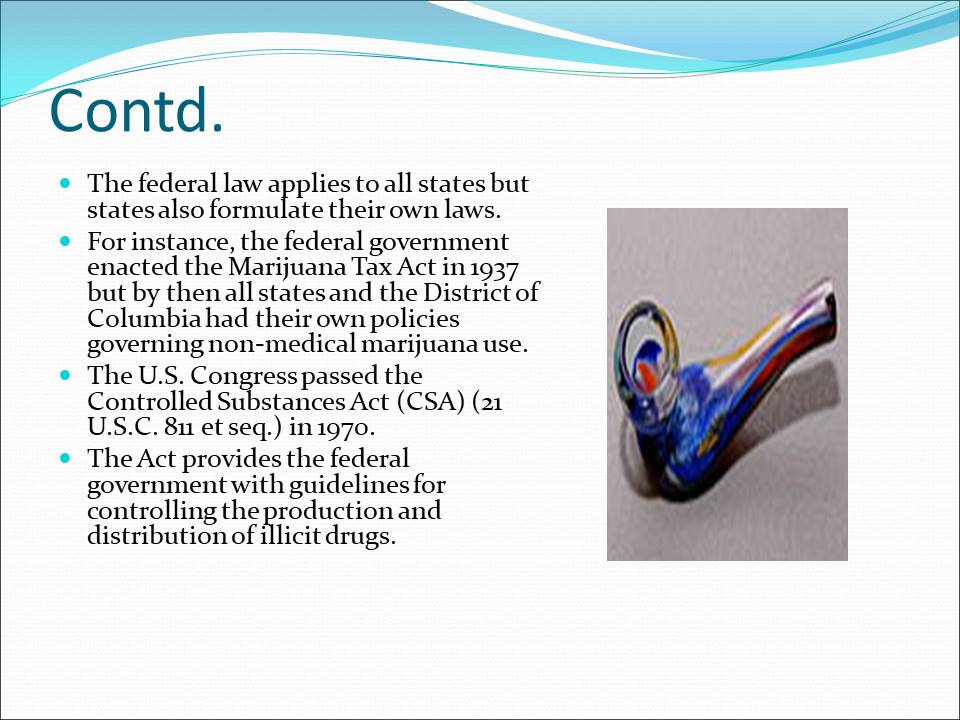
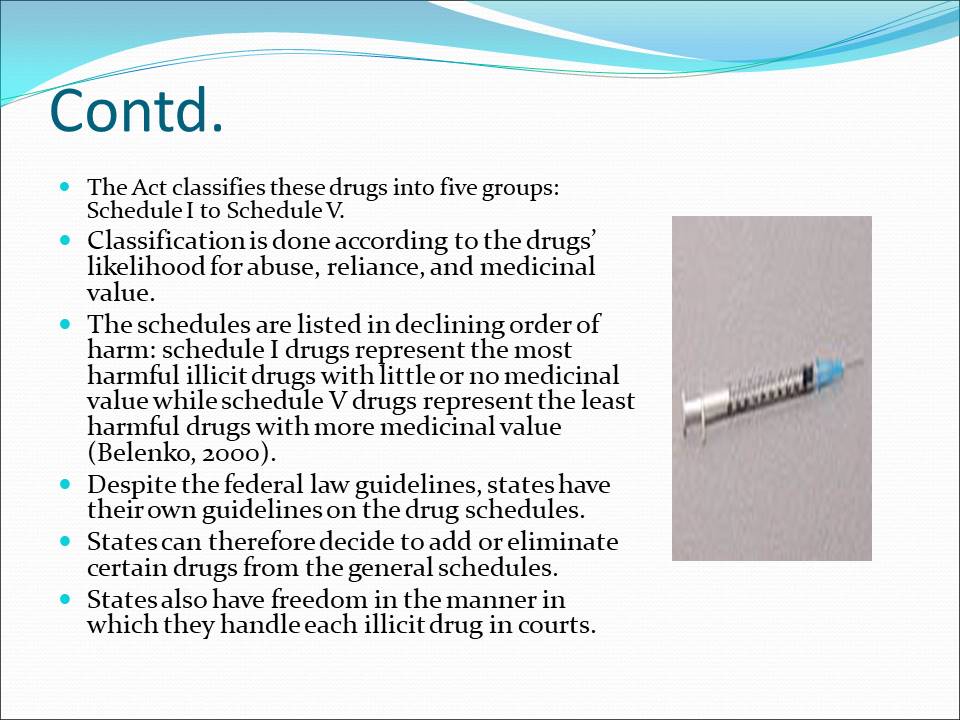
Marijuana
In 1970, the federal government classified marijuana as a Schedule I drug and hence harsh penalties were given for marijuana use or possession.
States however begun formulating their own marijuana policies although initial statutory laws had a narrow scope and depended on federal authority.
For instance, majority of states enacted laws that enabled Therapeutic Research Programs that relied on federal authorization and supervision of research procedures.
Other states also rescheduled marijuana to permit marijuana prescription by physicians for medicinal values.
Such laws were limited because the licenses required were authorized by the federal government which still forbade the practice.
The statutory laws were later provoked in the mid-1980s when the federal government refused to relax its stand on marijuana.
The formulation of new statutory legislations on marijuana begun in the mid-1990s.
These laws defend marijuana users from prosecution if the use is for medicinal purposes (ImpacTeen Illicit Drug Team, 2002).
In United States v. Oakland Cannabis Buyer’s Cooperative (2001), it was declared that these new laws do not apply to third-party marijuana distributors.
Although the issue of marijuana cultivation is prohibited by the federal law, states are silent on this matter. Only seven states allow the growing of marijuana at home by patients.
Since 1995, statutory laws concerning marijuana have been enacted in 10 states namely: “Alaska, Arizona, California, Colorado, Connecticut, Hawaii, Maine, Oregon and Washington,” (ImpacTeen Illicit Drug Team, 2002, p. 6).
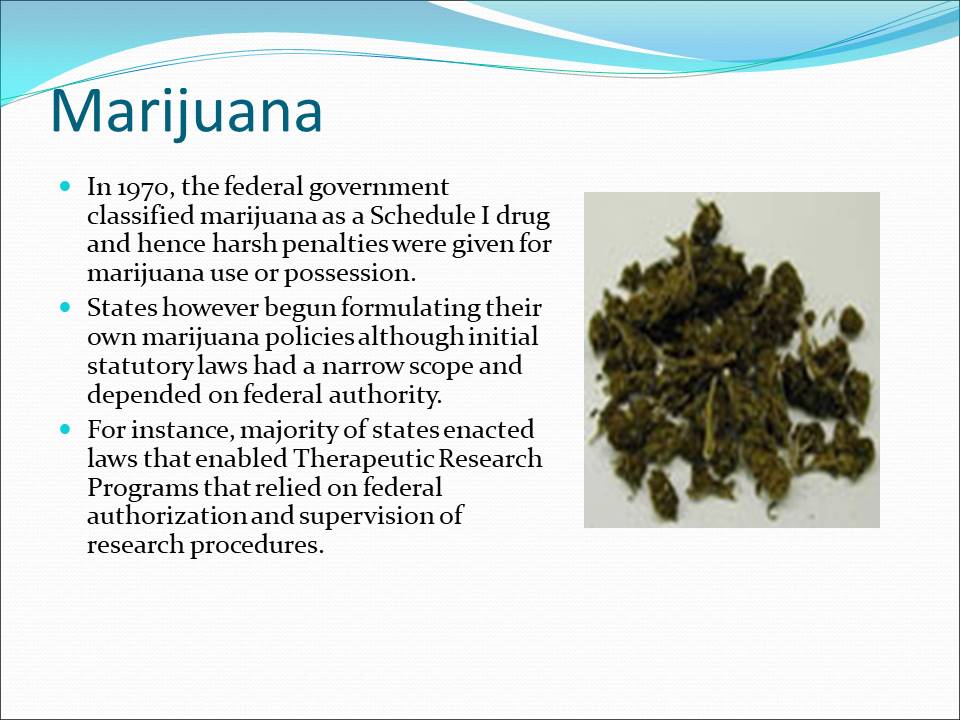
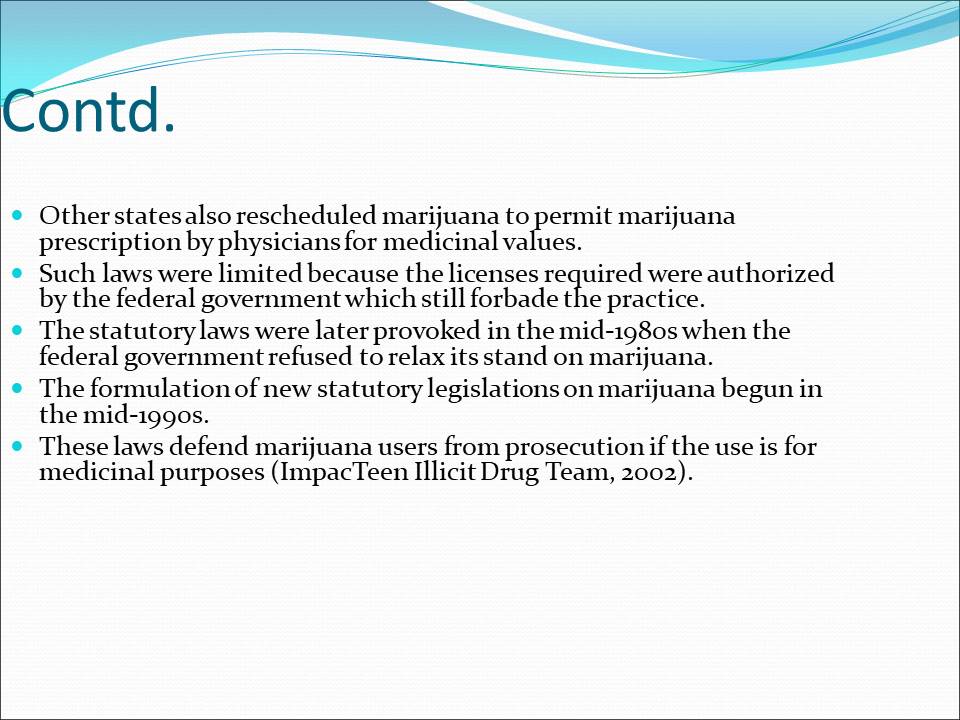
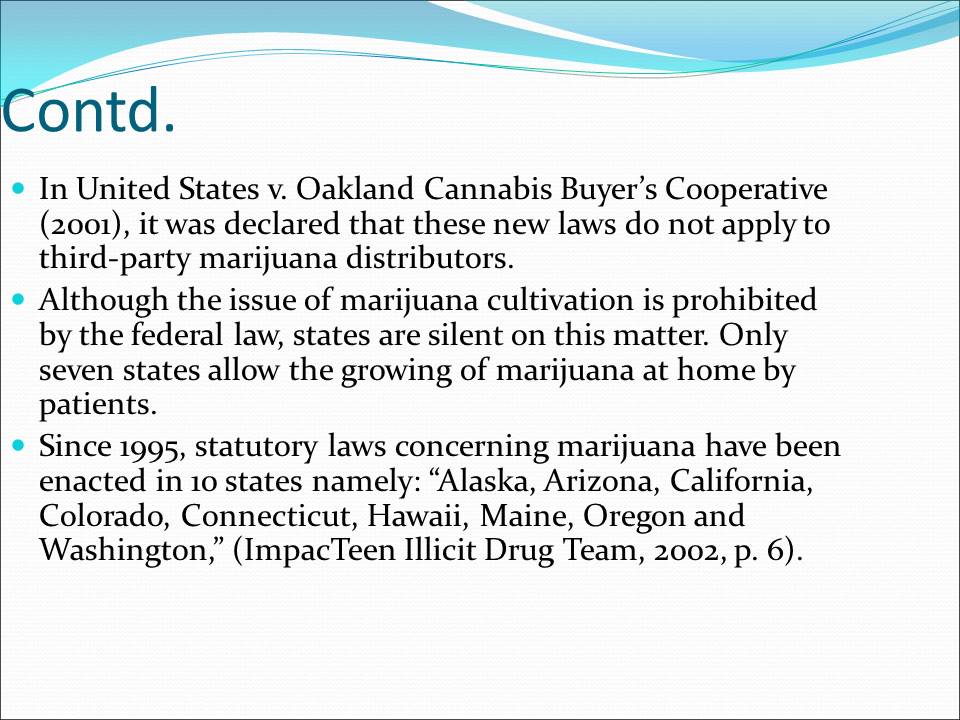
Legalization of Illicit Drugs
There have been proponents to legalize marijuana because of its medicinal value.
The legalization of marijuana affects the war on drugs because it increases its use even for non-medicinal purposes.
Legalization would also reduce asset forfeitures.
The war on drugs has created controversy because of the assets seized by the police in the name of this war.
The government has a right to possess any items connected with marijuana.
For instance, the government can forfeit any farm that is found growing marijuana plants.
In such situations, the burden of proving innocence always falls on the owner of the assets.
Legalization would thus eradicate the forfeiture of assets connected with the legalized drug (Belenko, 2000).
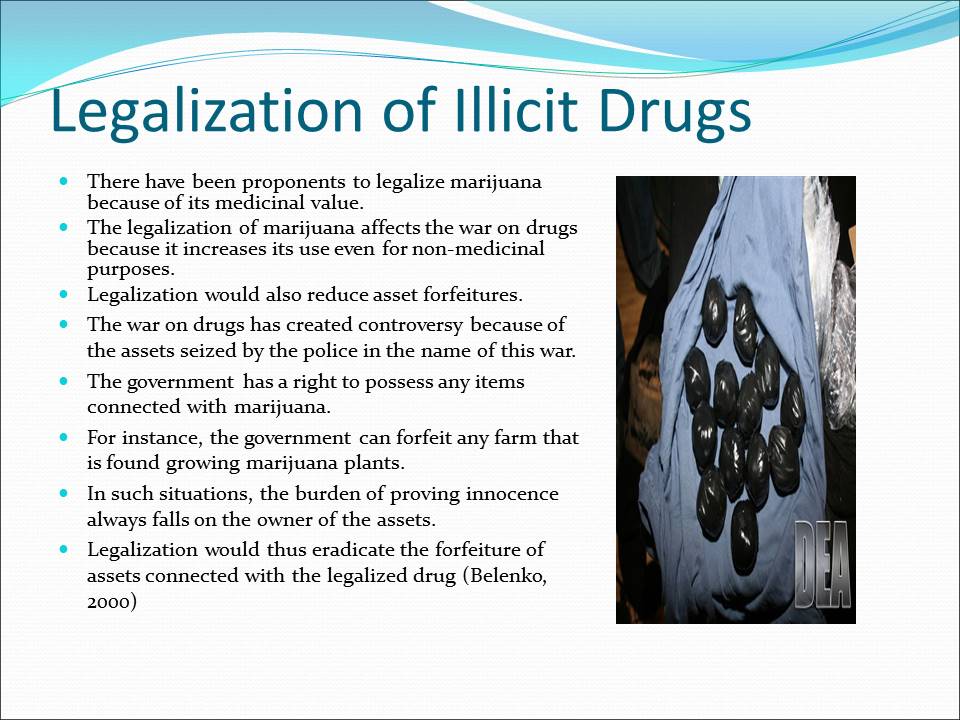
Sale and/or Possession of Standard Retail Amounts
There are no standard penalties for standard retail amounts of the illicit drugs across the states.
States differ in the maximum imprisonment term for sale or possession of illicit drugs.
The least variation across states is in the possession of marijuana in which approximately 95% of all states impose a maximum imprisonment term of less than 1 year.
Minnesota and Nevada are the only states that have a maximum imprisonment term of more than one year for marijuana possession.
The greatest variation across states lies in the possession of cocaine, ecstasy and methamphetamine. The term ranges between 1 and 15 years for cocaine and ecstasy and between 1 and 25 years for methamphetamine.
There is also great variation in the penalties for the sale of the drugs across the states.
However, the penalties are harsher for the sale of the drugs than for their possession.
For instance, the sale of 10 grams of marijuana has a penalty of less than 1 year in North Carolina but a life imprisonment in Montana and Oklahoma.
Montana also imposes a maximum life imprisonment term for the sale of cocaine, ecstasy and methamphetamine.
Arkansas, Idaho and Oklahoma also impose a maximum of life imprisonment for the sale of cocaine while Texas adds to this list in the sale of methamphetamine.
Besides imprisonment, states also impose monetary penalties (fines) for the sale and/or possession of the four drugs.
Fines range between hundreds of dollars and a million dollars.
The amount of fine depends on the offense committed, the particular state, and the type of drug.
Similar to the case of imprisonment, the least variation in possession fines across states is in marijuana. The maximum fine for marijuana possession is $5,000 in all states except Arizona and Minnesota,
The greatest variation is in possession of cocaine, methamphetamine and ecstasy respectively with fines ranging from $500 to $750,000.
While almost 45% of states impose a minimum fine of $5,000 for ecstasy possession, 15 states do not have a maximum fine for the same.
The fines for the sale of these four drugs are greater than the fines for their possession.
Sale of marijuana has the least fines (maximum of between $100 and $500,000) while the fines for the other three drugs are much higher (maximum of between $2,500 and $1m).
Minnesota has the highest maximum fine for the sale of cocaine, methamphetamine and ecstasy while Georgia, Missouri and North Carolina have no maximum fines for the sale of the same drugs.

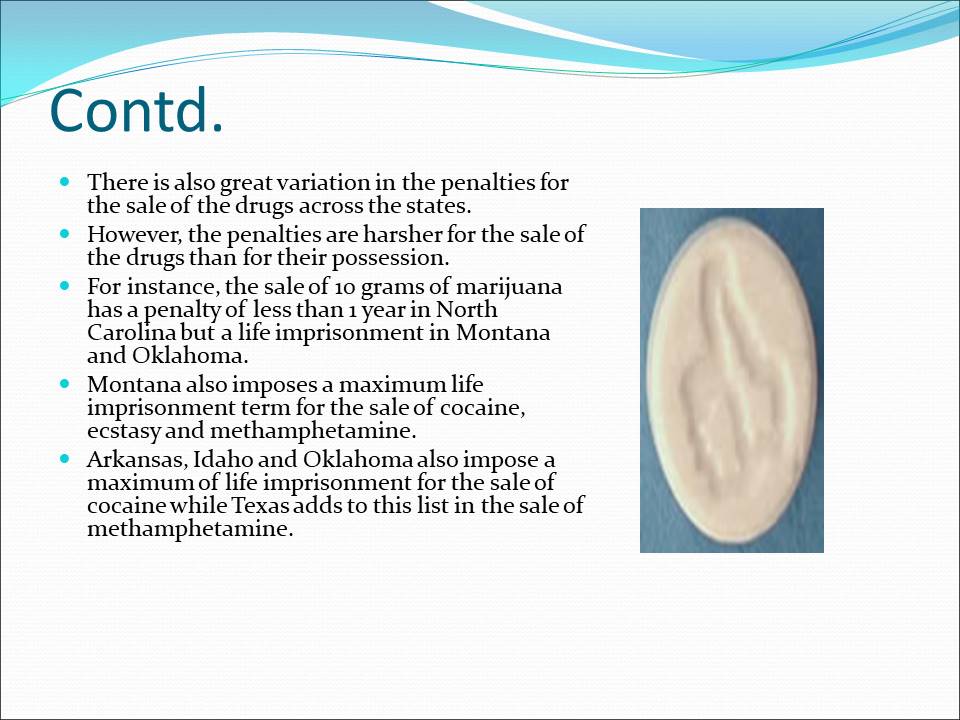
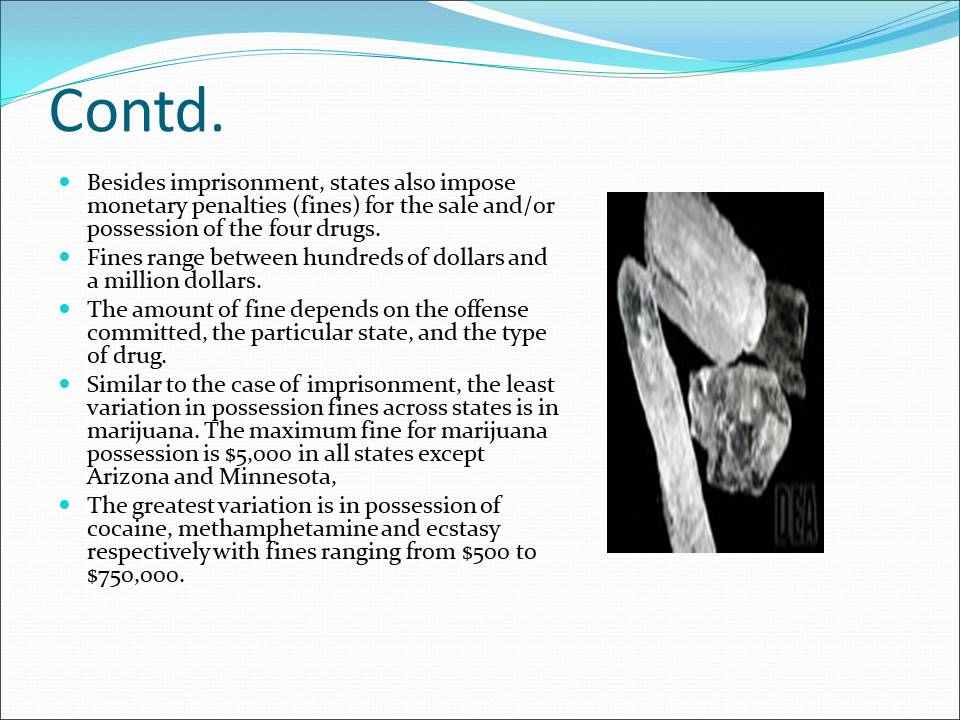

Subsequent Offenses
Majority of the states (with the exception of Delaware, Florida, New Jersey, Ohio and Oregon) have harsher penalties for subsequent offenses involving the same violation.
A different mechanism is used by the judicial system for imposing penalties for multiple offenses involving different offenses.
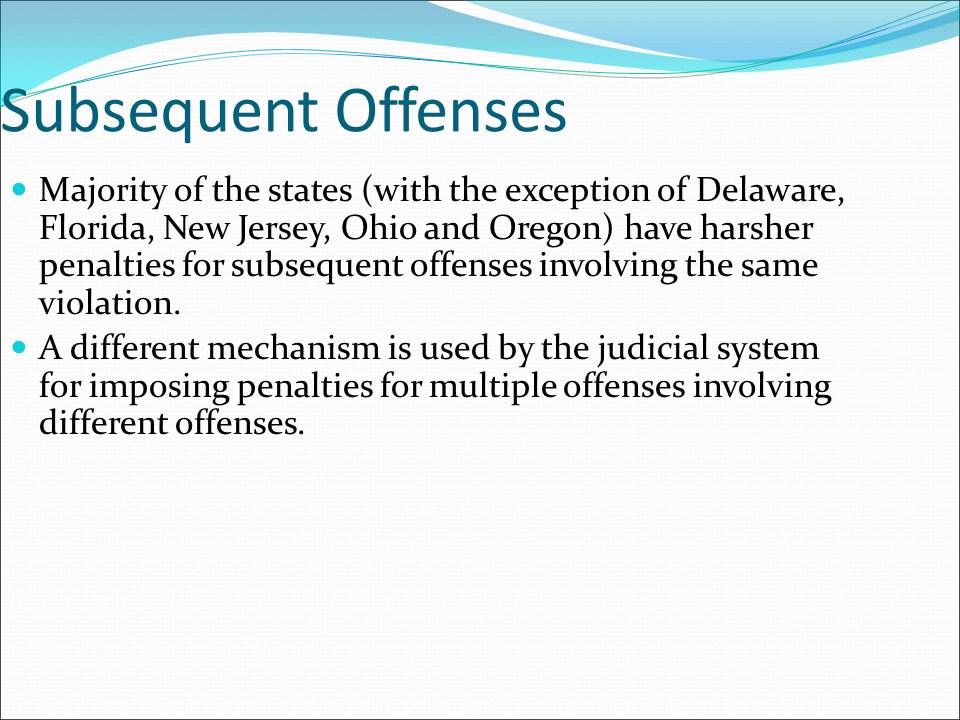
Club Drugs
Club drugs refer to a group of illicit drugs that consists of: Rohypnol, GHB, ketamine, and ecstasy (Beck & Mumola, 1999).
Club drugs have only gained public attention in the recent past.
Nevertheless, states have for a long time had policies governing the use, possession or trafficking of club drugs.
Maximum statutory-based imprisonment term for Rohypnol, GHB and ecstasy is life imprisonment while for ketamine ranges from 20 years to life imprisonment.
Maximum fines for possession are $500,000 (ketamine), $600,000 (GHB), $750,000 (Rohypnol), and $ 1m (ecstasy).
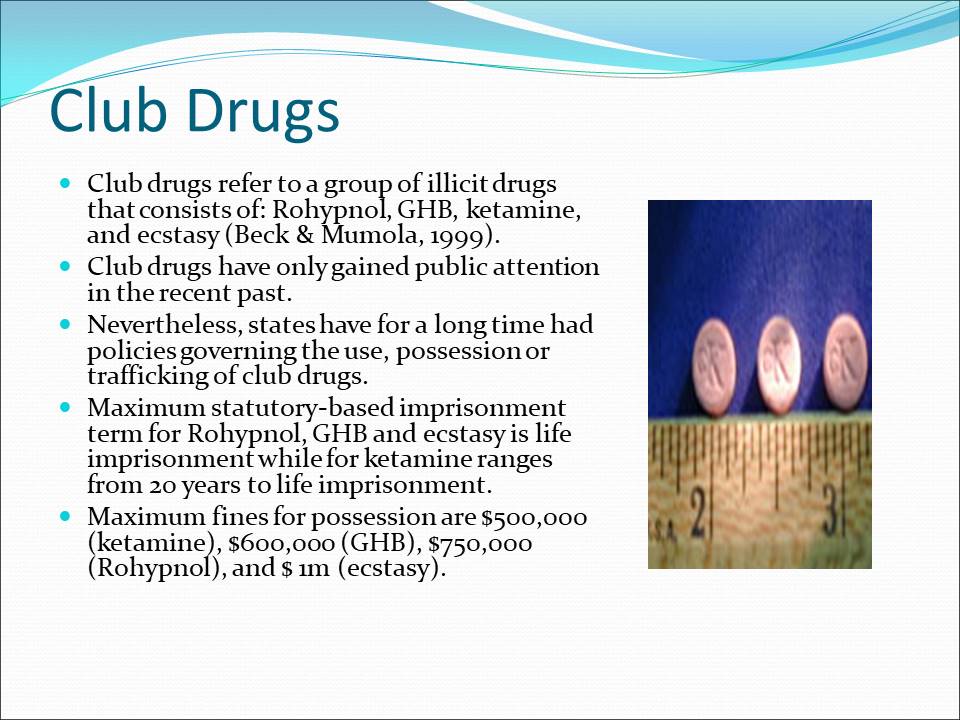
Crack vs. Powder Cocaine Discrepancies
Differences in penalties for crack and powder cocaine originated in the 1980s.
The differences resulted from a significant increase in crack cocaine use, its greater harm on users and higher crime rates.
The federal government enacted a legislation of mandatory 5-year imprisonment for 5 grams crack cocaine.
The same imprisonment term was implemented for the use/possession of 500 grams of powder cocaine.
This 100:1 difference between crack and powder cocaine is not commonly applied by states (Belenko, 2000).
Only 11 states (Connecticut, Iowa, Maine, Maryland, Missouri, New Hampshire, North Dakota, Ohio, Oklahoma, South Carolina, and Wyoming) have different penalties for crack and powder cocaine.
Although many states’ legislations treat crack and powder cocaine the same, the situation is different in courts.
The differences in the sentencing of these two forms of cocaine are thus not statutorily-based (Belenko, 2000).
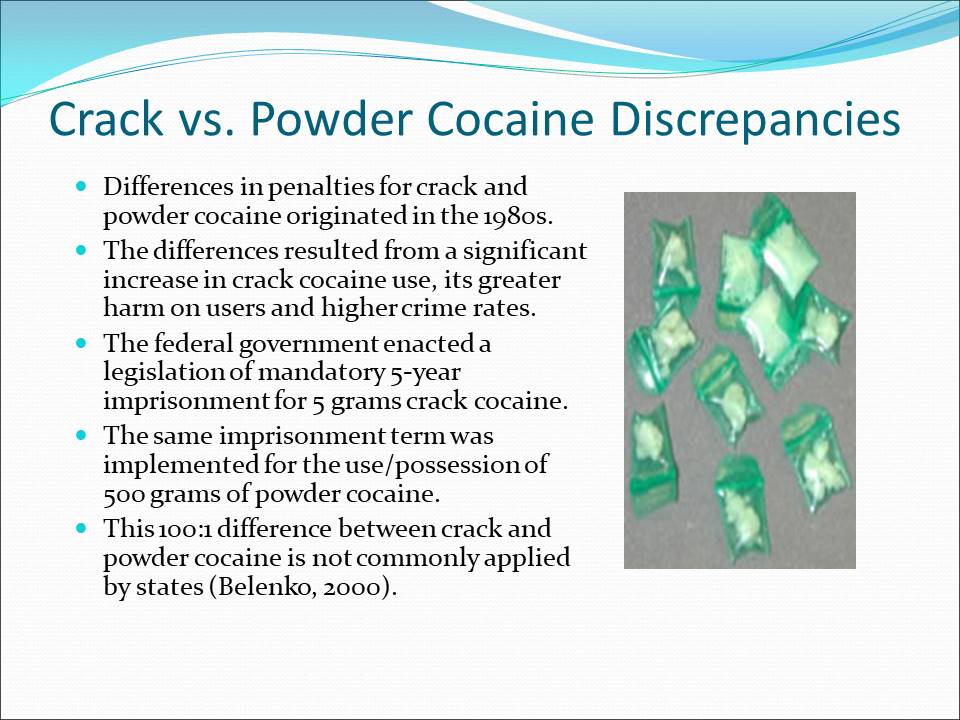

Conclusion
Law is the most widely used means of curtailing illicit drug use, sale and/or possession in the United States.
Some argue that criminalizing drug use/sale/possession does not deter such behavior while others believe that it does.
The analysis indicates that federal policy is applicable to all states.
However, states have great autonomy in the application of such laws as well as in the formulation of their own anti-drug policies.
While some policies are shared across states, others vary from one state to another. Some states adopt harsher anti-drug policies while others adopt lenient policies.
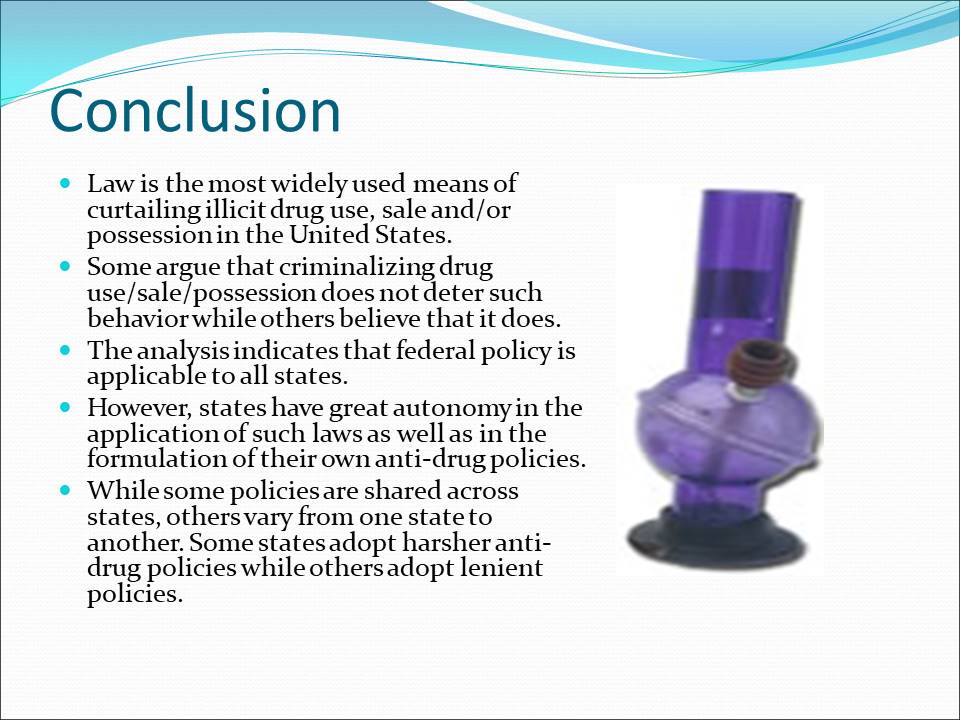
Reference List
Beck, A. J., & Mumola, C. J. (1999). Prisoners in 1998. Washington, D.C.: U.S. Department of Justice, Office of Justice Prevention.
Belenko, S. R. (2000). Drugs and drug policy in America. Westport, CT: Greenwood Press.
Harwood, H., Fountain, D., & Livermore, G. (1998). The economic costs of alcohol and drug abuse in the United States. Bethesda, MD: National Institute on Drug Abuse.
ImpacTeen Illicit Drug Team. (2002). Illicit drug policies: Selected laws from the 50 states. Berrien Springs, MI: Andrews University.
Substance Abuse and Mental Health Services Administration (SAMHSA) (2000). Summary of findings from the 1999 National Household Survey on Drug Abuse (NHSDA). Rockville, MD: U.S. Department of Health and Human Services.